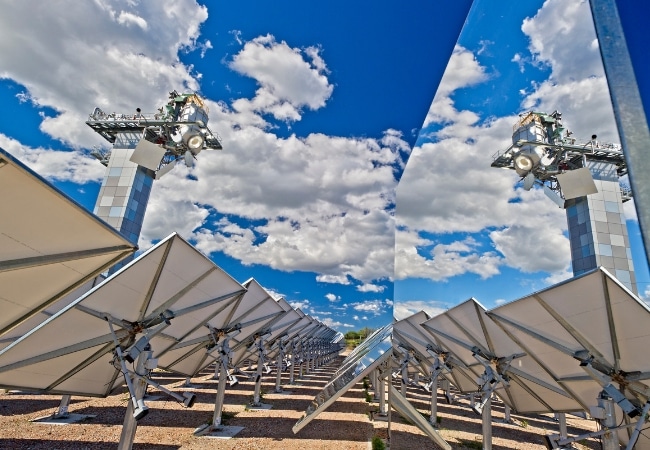A CSIRO solar energy expert says our next generation of electricians and engineers should look to the solar energy industry for inspiration.
CSIRO Research Group Leader for Solar Energy Systems Dr Greg Wilson told the Herald Sun that Australia’s renewable energy boom offers secondary students the chance to think big about a career in science, engineering or the electrical trades.
Wilson gave the example of computer software billionaire Mike Cannon-Brookes. The entrepreneur is also a champion of the solar energy industry, famously challenging Tesla’s Elon Musk to build South Australia’s Hornsdale Power Reserve mega-battery.

Wilson also cited Suntech founder Dr Shi Zhengrong. Shi is a graduate of the UNSW School of Photovoltaic and Renewable Energy Engineering.
“Students and parents should think about what’s happening in the world right now,” Wilson said.
“There’s big growth around entrepreneurship and building new industry and just considering what the future is going to be like.”
Wilson was part of the CSIRO team that produced printable perovskite solar cells.
Renewable and solar energy industry creating thousands of jobs
Wilson’s comments follow a new analysis predicting the renewable and solar energy industry could create close to 60,000 new jobs.
Estimates from the Australia Institute show a rapid renewable energy transition would subsequently generate 58,554 jobs each year for eleven years.
The ‘Will-o’-the-ISP’ report is based on the Australian Energy Market Operator’s Integrated System Plan (ISP) up to 2030.
The ISP is a comprehensive infrastructure development plan for Australia’s energy system. It also projects how much renewable energy will enter the market between now and 2030.
The plan also includes a ‘fast’ scenario that sees 42,895 MW of new renewable energy capacity built by 2029-30. This will result in 53 per cent of generation capacity from renewables.
Nearly 15,000 renewable jobs in 2016-17
According to the Australian Bureau of Statistics, annual direct full-time equivalent (FTE) employment in renewable energy was estimated at 14,820 in 2016-17.
This is an increase of 3,680 in FTE employment (33%) from the previous year. It also represents the highest level of FTE employment in renewable energy activities since 2012-13. Rooftop solar was the largest employment sector in 2016-17 (43%).
The ISP ‘fast’ transition to renewable energy would see these figures increase exponentially.
However, concerns remain about a lack of renewable energy storage investment. That’s because wind and solar are intermittent and need hydro or chemical battery back-up for 24/7 dispatchability.













































